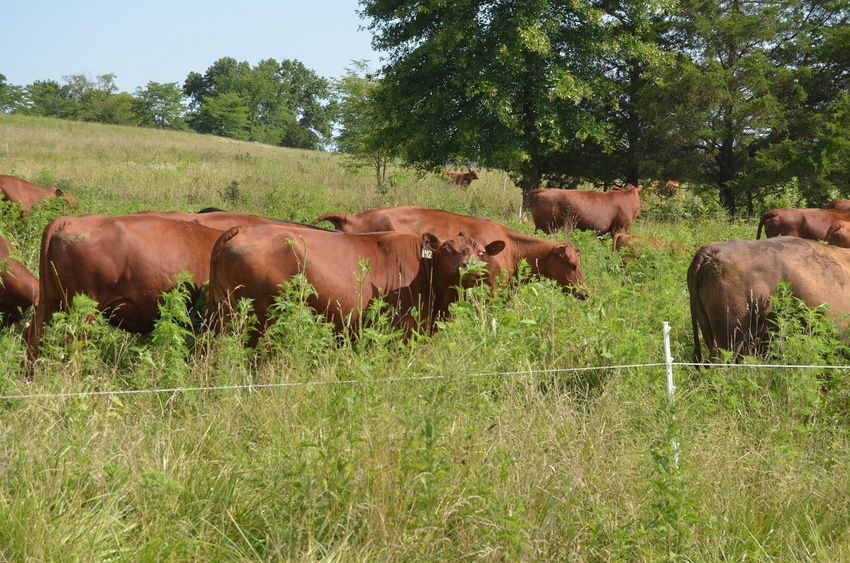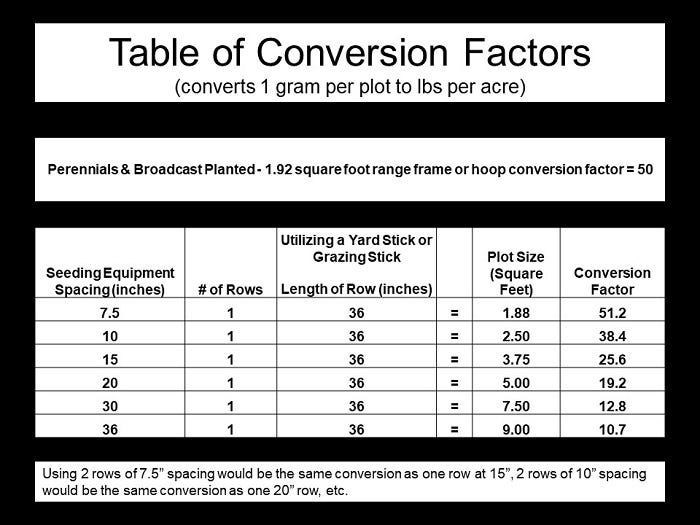
If you want to use cover crops to fill holes in your forage production or to replace hay, it helps to estimate the crop's production and how long it will fill the needs of your cattle.
Fundamentally, this involves creating an inventory of how much forage you have, an inventory of how much forage your livestock consume and will need, and an estimate of how the two match up, therefore how much grazing you have and how long it should last.
This does not create an ironclad guarantee of adequate forage, but can give you a pretty good foundation to work from, says Doug Spencer, NRCS range specialist from Marion, Kansas.
"The key is to understand plant growth and ecosystem processes in your environment," he says. "Set a goal on how you can positively impact those things, then measure and monitor to make timely decisions. In reality, it’s more about direction than perfection when it comes to management."
To create the forage inventory, generally you will figure up the kinds and amounts of forages available, and factor in the "harvest efficiency" of the forage, meaning how much you will aim for the livestock to consume.
To create your livestock inventory, you'll need the number, size, and kind or class of stock and their expected consumption by body weight. This should help you estimate total consumption by day, and over time. Then you'll factor that into the time you expect to need the forage.
Last, you'll try to come up with what Spencer calls a "forage and livestock balance." Essentially, this is an attempt to figure out whether you have the forage availability to get your livestock through the grazing season and/or through the year.
The graphic with this story shows the whole process as a mathematical formula.

Estimate annual forage production
Ideally, this would include all your forage. In sum, you can combine regional forage production from your local NRCS field people with weighed field clippings, with adjustments for soil type. Any clippings should be air dried to determine dry matter, since animal consumption figures are in dry matter. Multiplying an average forage production such as you have created by the number of acres gives you a total forage production number.
With cover crops, you can use the standard 1.92-square-foot measuring range frame or hoop for broadcast-seeded estimates, or you may do better to estimate production using clippings measured by linear feet in drilled or planted situations. (See chart for conversion factors.)
Once you determine the total estimate of air-dried production for that crop, then you can factor in expected harvest efficiency. The old standard for all forage is 25% grazed, 25% wasted and 50% ungrazed. However, if you have good grazing control, such as with strip grazing, you can take much better control of those figures. Remember when planning and executing forage consumption that keeping the soil covered is important for soil health.
Therefore, if you have estimated you are growing 6,000 pounds of dry matter per acre and plan to harvest 40% with strip-grazing and trample or leave perhaps 60%, that suggests you would have 2,400 pounds of dry matter available for use. If this is a 100-acre field, that suggests you would have 240,000 pounds of total dry matter available to graze.

Estimate livestock forage demands
Livestock demand is usually figured on a daily basis and then converted to longer timeframes. Spencer often uses 3% of body weight, on a dry-matter basis, for all types of livestock on good quality forage. There are many exceptions to this rule: On lower-quality forages consumption will be lower. Some young classes of livestock eat lower percentages. As cows begin lactating they eat more. However, 3% is a good, safe starting point.
That says, for example, that a 500-pound stocker would eat about 15 pounds per day, a 1,000-pound cow would eat about 30 pounds per day, and a 1,400-pound cow would eat about 42 pounds per day of forage dry matter.
Therefore, if you had 200 cows that weighed 1,000 pounds, they would eat 30 pounds each of dry matter for a total of 6,000 pounds per day. Now you have a figure you can use in matching available forage to livestock needs, thereby finding out how many days of grazing you may have.
Make the scales balance
To match livestock grazing demands with forage availability, we can divide the total forage available by the total demand of the livestock.
Using our previous example with the 100 acres of cover crop and 200 cows, we would divide the 240,000 pounds of dry matter by the 6,000 pounds of daily consumption. This says we could have 40 days of grazing on that 100 acres, if consumption and production turn out to be what we estimated they would be.
The final results, of course will not match your plans exactly. That's why it's important to monitor along the way and have contingency plans. The same is true with all attempts to balance livestock needs with probable forage production, but it is a worthwhile endeavor. It is especially useful if you use multi-paddock, adaptive grazing and have real control of your stock. The process can help you make informed decisions about seasonal forage supplies and needs, as well as hay supplies needed or possibly decisions about selling livestock when things get tough.
Spencer says, "I get to inventory a lot of landscape each year. It’s interesting how often an 'average' stocking rate is used in an area, but in all my assessments, I've yet to find the average pasture. Each fenced area is unique based on soil type, forage type, past management, tree or brush cover, acres of surface water, and so forth. I try to help producers understand those variables and their impacts."
About the Author(s)
You May Also Like




